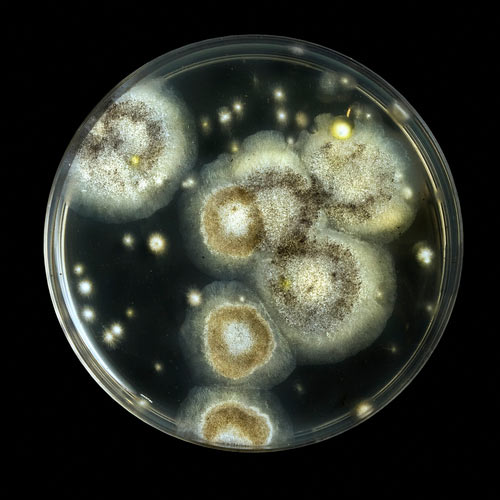What Does Toxic Mold Look Like?
When you think of mold, you might envision the dull greenish-gray color that appears on bread, vegetables and other food items. In reality, toxic mold and other varieties come in a wide range of colors.
How do you spot the difference from one type of mold to another? Here is an overview of colors and other visual characteristics of the more common types of toxic mold.
Stachybotrys chartarum
 You may recognize this type of toxic mold by its more familiar name, black mold, which is self-explanatory when it comes to color. Stachybotrys chartarum has a dark, greenish-black hue that is usually not seen in other varieties of mold. Black mold is also distinguished by a shiny, slimy appearance that turns powder-like when it dries out.
You may recognize this type of toxic mold by its more familiar name, black mold, which is self-explanatory when it comes to color. Stachybotrys chartarum has a dark, greenish-black hue that is usually not seen in other varieties of mold. Black mold is also distinguished by a shiny, slimy appearance that turns powder-like when it dries out.
Aspergillus
With more than 200 identified species, Aspergillus is the type of mold most frequently found in the environment, both indoors and outdoors. Aspergillus is also considered a toxic mold because it produces mycotoxins, chemical substances that can cause health problems in humans and animals.
Out of roughly 16 varieties of Aspergillus that affect humans, these are the three biggest threats:
• Aspergillus fumigatus is the number one cause of allergic reactions. It's particularly dangerous for people with underlying lung conditions or compromised immune systems. This form of Aspergillus is bluish-green or gray on its surface and white or tan underneath.
• Aspergillus flavus is next on the list. It emits a mycotoxin called aflatoxin, which contaminates foods such as nuts, seeds and legumes. This form of Aspergillus is markedly different, with a surface color of yellowish-green and gold or reddish-brown at the base.
• Aspergillus niger is the most hardy variety, with an ability to grow even in areas that are low in nutrients. While Aspergillus niger is not classified as black mold, it has a black-colored surface with white or yellow beneath.
Cladosporium
Cladosporium is another species included under the category of toxic mold. Its prevalence tends to vary with the seasons, becoming more prevalent in the summer. Surface colors range from olive green to brown or black. Like other types of toxic mold, Cladosporium can cause allergic and upper-respiratory symptoms, and there's also a connection to skin and toenail infections.
Solve Your Mold Problem Fast – Don't Compromise Your Interior Air Quality
Regardless of whether or not it's toxic mold, don't take any chances if you find an infestation in your home or business. Quick treatment assures that mold spores do not spread widely in your home or business and allow for localized treatment and lower treatment costs.